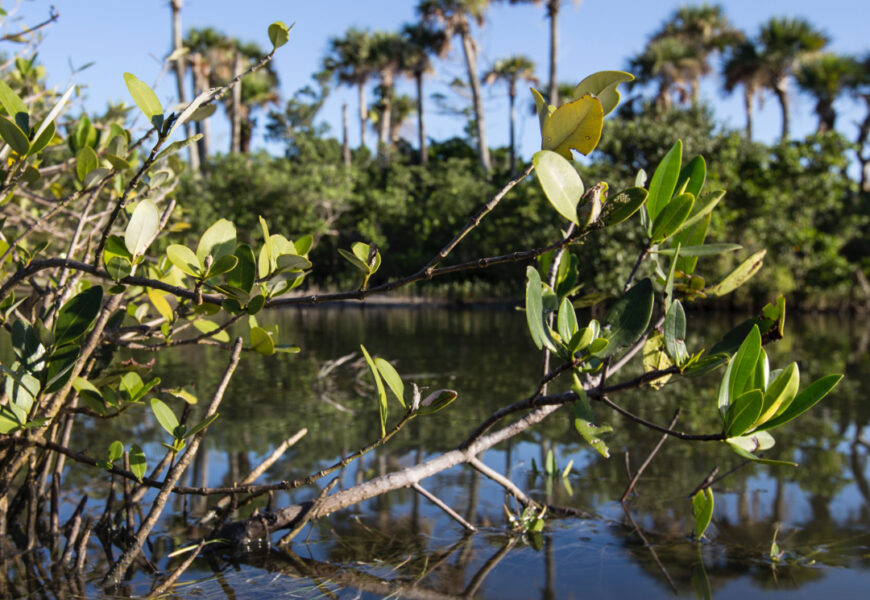Living Shoreline Training
Meeting The Growing Demand for Living Shorelines
The Living Shoreline Training for Marine Contractors Course prepares a coastal workforce to meet the increasing demand for living shorelines.
What Is the Living Shoreline Training for Marine Contractors Course?
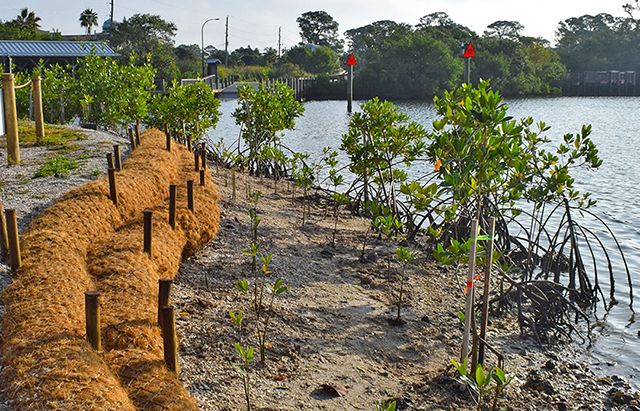 A two-day, interactive course hosted by Florida Sea Grant and partners that is offered in various locations across Florida. This training takes a deep dive into living shoreline installations in estuarine (brackish) ecosystems. From the basics of what constitutes a living shoreline to plant selection to design to monitoring to in-depth discussions on the permitting process, this course seeks to equip contractors and others with the knowledge to move forward on the practices of a nature-based shoreline.
A two-day, interactive course hosted by Florida Sea Grant and partners that is offered in various locations across Florida. This training takes a deep dive into living shoreline installations in estuarine (brackish) ecosystems. From the basics of what constitutes a living shoreline to plant selection to design to monitoring to in-depth discussions on the permitting process, this course seeks to equip contractors and others with the knowledge to move forward on the practices of a nature-based shoreline.
Instructors vary from course to course, but typically include Florida Sea Grant, US Army Corps of Engineers, Florida Department of Environmental Protection, local government, non-profit organizations, and other local shoreline experts. Efforts are made to invite locally-relevant agencies and organizations that work directly on living shorelines in the region where a course is being held.
The course provides: engagement with topic experts and professional presentations, a comprehensive manual, videos, group exercises, field trips, and an exam (for program evaluation purposes).
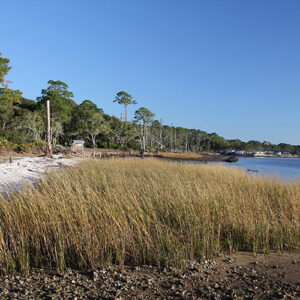 After the course, participants will be able to:
After the course, participants will be able to:
1) Communicate the benefits and relative costs of shoreline stabilization options
2) Perform a site assessment, evaluate design options, and navigate the permitting process
3) Implement a living shoreline project with vegetation and/or breakwater materials
4) Follow up, evaluate, and provide clients/homeowners with maintenance and monitoring information
Continuing Education (CEU/CE) Credits are currently available from:
Society for Ecological Restoration Certified Ecological Restoration Practitioner Program (CERP)
Florida Nursery Growers and Landscape Association (FNGLA)
More information can be found here.
Who Is This Course For?
Although this course title is training for marine contractors, it is offered to anyone looking to learn the details of how to permit and install living shorelines in estuarine (brackish) ecosystems. In the past, marine contractors, professional engineers, landscape architects, property owners, local government staff, and other professional consultants have joined us to explore this nature-based solution to improving coastal erosion and water quality.
Background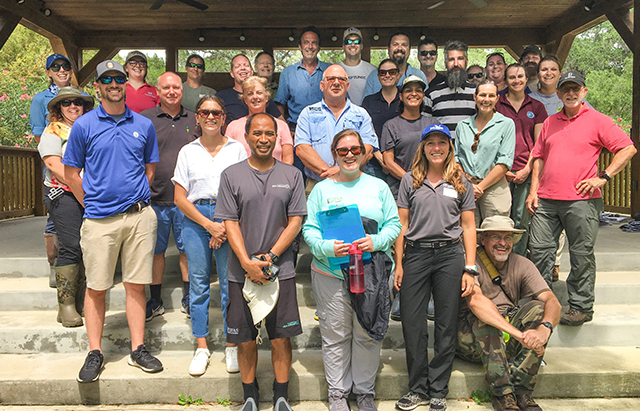 In 2019, the Living Shoreline Training for Marine Contractors curriculum was released. The Florida Fish and Wildlife Conservation Commission (FWC) completed their lead in creating a multi-agency curriculum designed to instruct marine contractors in installing living shorelines in the various estuarine (brackish water) ecosystems of Florida. The curriculum helps contractors develop the knowledge needed to design, permit, implement, monitor, and maintain living shorelines for property owners, either alone or in addition to existing seawalls or other structures.
In 2019, the Living Shoreline Training for Marine Contractors curriculum was released. The Florida Fish and Wildlife Conservation Commission (FWC) completed their lead in creating a multi-agency curriculum designed to instruct marine contractors in installing living shorelines in the various estuarine (brackish water) ecosystems of Florida. The curriculum helps contractors develop the knowledge needed to design, permit, implement, monitor, and maintain living shorelines for property owners, either alone or in addition to existing seawalls or other structures.
In 2021 and 2022, Florida Sea Grant Agents took the lead in offering this curriculum virtually. The course covered the entire curriculum and included a self-guided shoreline site visit. Contractors, regulatory staff, and other living shoreline practitioners from around the state attended. In 2023, Florida Sea Grant -through funding awarded by the Florida Department of Environmental Protection (FDEP)- began hosting in-person courses statewide. Throughout 2023 and 2024, Florida Sea Grant and its partners hosted 12 Living Shoreline Training courses and a multi-location, one-day Permitting Workshop that included regular instructional, educational, and logistical support from agencies such as the US Army Corps of Engineers, FDEP Regulatory, local government, non-profit organizations, and private regional experts. For more information on our partnerships, please read: Partners for Living Shorelines: A Thank You to Colleagues and Course Participants – Florida Sea Grant
Previous Course Locations 2024
Sun Coast: Tampa Bay (Palmetto, Manatee County), May
Forgotten Coast (East Point, Franklin County), April
Central Indian River Lagoon (Vero Beach, Indian River County), March
Miami (Coconut Grove, Miami-Dade County), February
Previous Course Locations 2023
Sun Coast: Pinellas (Tarpon Springs, Pinellas County), November
Treasure and Golden Coasts (Jensen Beach, Martin County), October
Collier and Lee Counties (Naples, Collier County), October
First Coast: North Jacksonville (Duval County), September
Flagler (Bunnell, Flagler County), May
Sarasota (Sarasota County), April
NW Panhandle (Milton, Santa Rose County), March
North Indian River Lagoon (Cocoa, Brevard County), February
Living Shoreline Permitting in Florida Workshop July 2023
Main Campus, Gainesville with six satellite locations: NW Panhandle (Fairhope, Alabama), NE (Ponte Vedra Beach), SW (Sarasota), SW (Naples), SE (Stuart), NW Big Bend (Eastpoint).
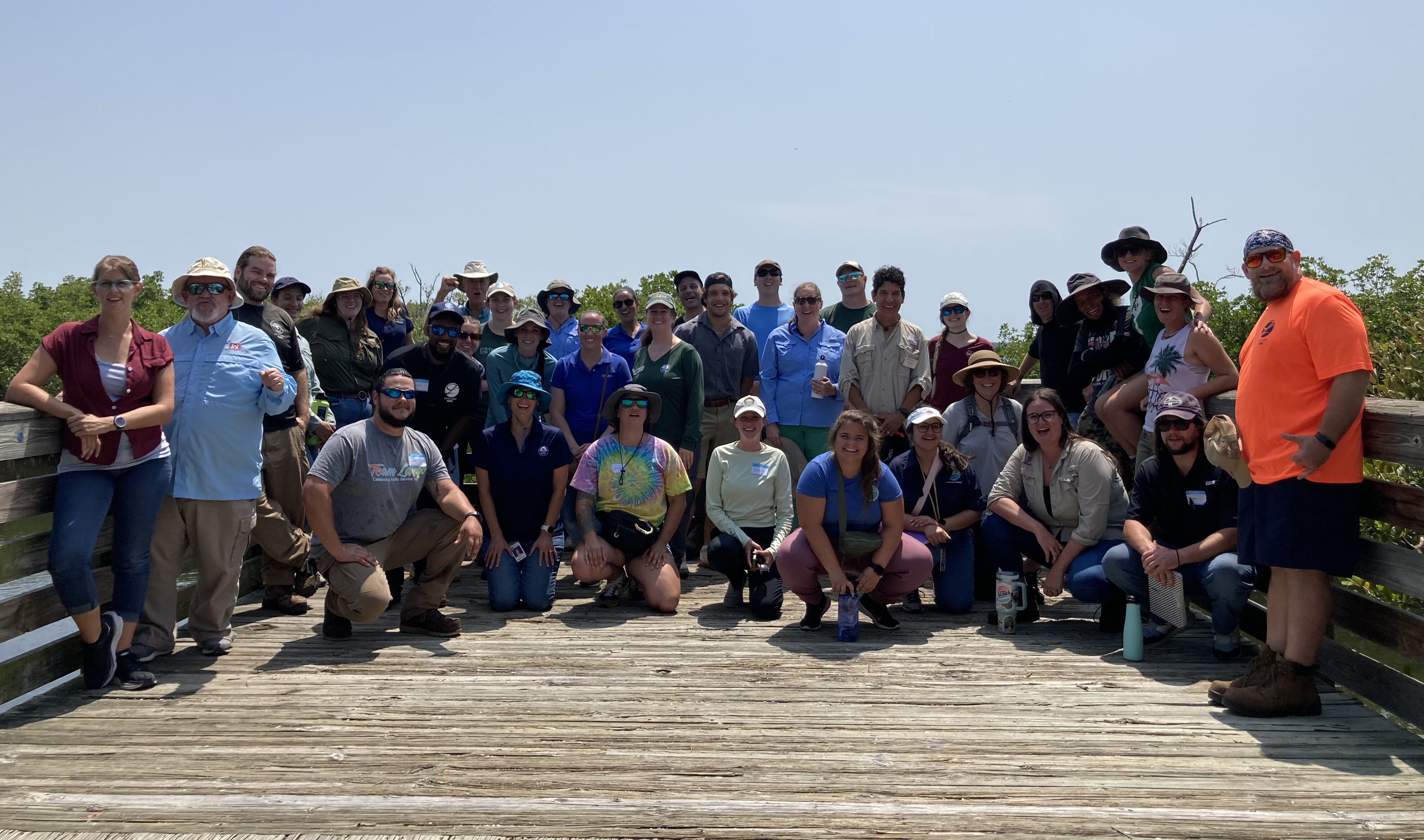 When Can I Attend a Training?
When Can I Attend a Training?
Subscribe to our newsletter to for program updates and training opportunities.
Why take the softer approach?
Living shorelines are softer, greener alternatives to stabilize shorelines from erosion, sea level rise, and other damage. They protect, restore, or enhance natural shoreline habitat and maintain coastal processes through the strategic placement of plants, oyster shell, and other structural organic materials. Living shorelines offer many benefits. They:
- Reduce wave energy and storm water flow rates
- Buffer the effects of storms
- Bolster shorelines by trapping sediments and stabilizing coastal land
- Ensure natural sediment movement along shorelines
- Improve water quality by filtering pollutants
- Are resilient to storm damage and sea level rise
- Trap carbon, reducing the effects of climate change
- Create and connect diverse animal habitats
- Provide recreational opportunities for people
- Beautify shorelines
Learn more about Florida’s living shorelines.
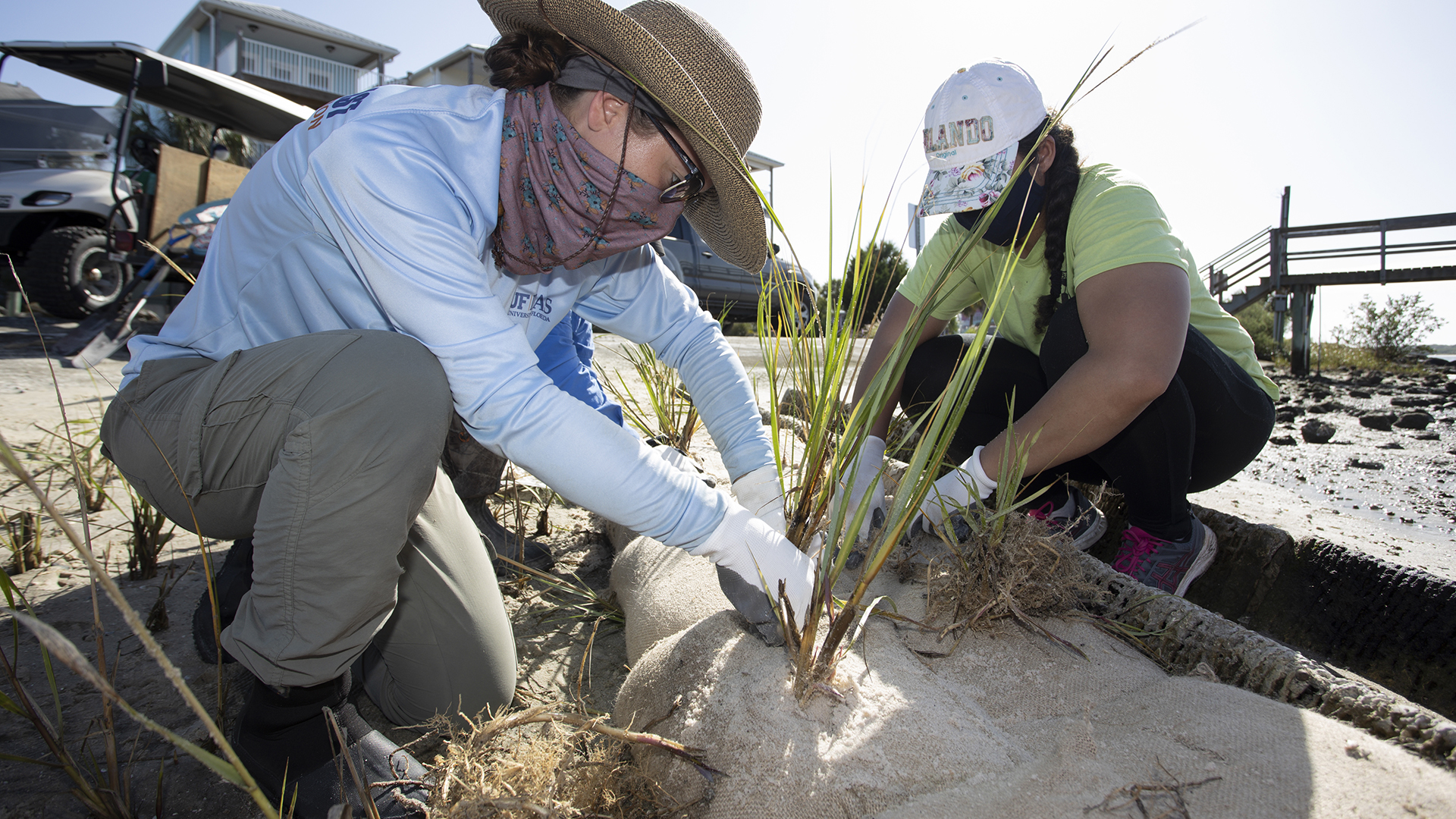
Living Shorelines
Latest
Blogs
Living Shorelines Training Videos
The following videos are intended for marine contractors and other shoreline restoration practitioners in Florida, however, anyone interested in living shorelines can benefit from their information.
